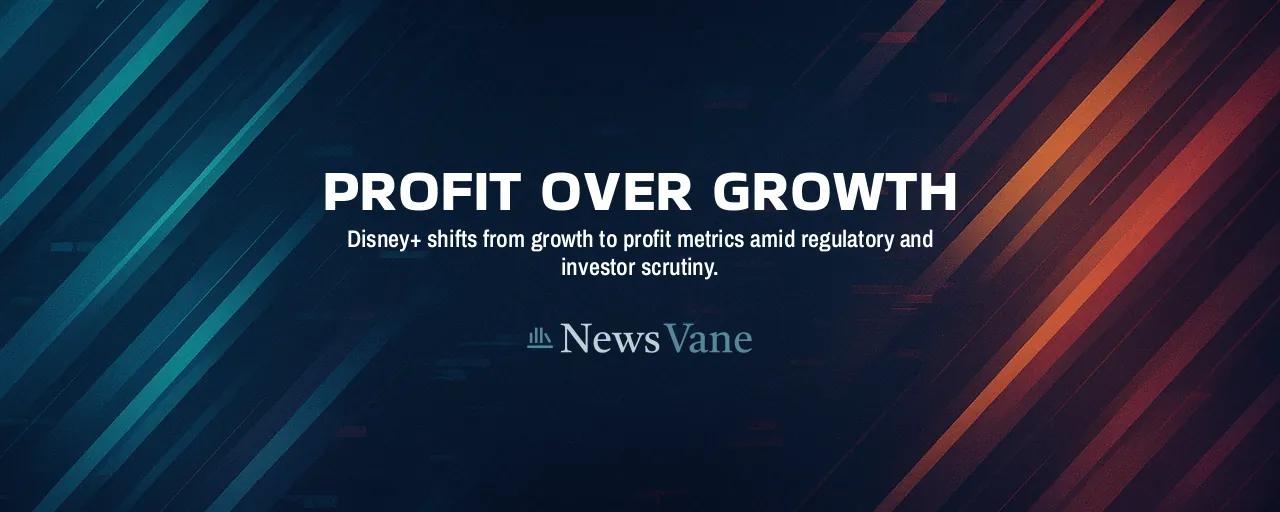A New Chapter for Disney+
Bob Iger, Disney's CEO, recently signaled a bold pivot for Disney+. In a CNBC interview, he hinted that the company might stop sharing subscriber numbers, a key metric that has long defined streaming success. With Disney+ boasting 126 million subscribers in its fiscal second quarter of 2025, exceeding forecasts, this potential change feels unexpected. It arrives as the streaming industry grapples with shifting priorities, where financial stability now overshadows rapid expansion.
This news has caught the attention of investors, analysts, and viewers. Subscriber counts have historically offered a clear gauge of a platform's reach and influence. Disney's consideration of withholding this data raises questions about how the company will demonstrate its performance moving forward. It also sparks a wider conversation about transparency in an industry where data sharing is often limited compared to traditional media.
The Changing Metrics of Streaming Success
Subscriber numbers once dominated the streaming narrative. When Disney+ launched in 2019, its swift subscriber growth drove investor confidence and industry hype. Now, as Iger suggested, the focus is shifting. With rising content costs and subscriber turnover, Disney is emphasizing profitability metrics like average revenue per user (ARPU) and segment earnings. These reflect financial health, aligning with investor demands for sustainable returns over sheer scale.
This approach echoes Netflix's earlier move to prioritize revenue and margins over subscriber counts. By focusing on profitability, Disney hopes to stabilize stock prices, which often fluctuate with subscriber reports. However, this change could make it harder for analysts and retail investors, empowered by digital trading platforms, to assess growth. It may also impact how Disney communicates its audience size to advertisers and partners, who value reach for campaign planning.
Navigating Investor and Public Expectations
Investor relations have transformed since the 1930s, when the Securities and Exchange Commission set disclosure standards. Today, companies leverage digital tools, AI-driven analytics, and virtual engagement to meet demands for real-time transparency. Disney's potential decision to stop sharing subscriber numbers could challenge these efforts. Retail investors, increasingly influential through platforms like Robinhood, rely on accessible metrics like subscriber counts. Without them, Disney risks creating uncertainty that could affect its stock.
Beyond investors, advocates for corporate accountability argue that streaming platforms play a critical role in shaping public discourse. Scholars promoting inclusive governance models stress that companies like Disney are expected to engage diverse stakeholders, including performers and communities, in decision-making. Reducing transparency by withholding subscriber data might be viewed as a setback, especially when trust in media companies is already tested by concerns over content practices and algorithmic fairness.
Regulatory and Industry Dynamics
Disney's decision unfolds against a backdrop of growing regulatory oversight. The Department of Justice and Federal Trade Commission are intensifying antitrust efforts, as seen in the 2024 Live Nation case and probes into tech monopolies. Some policymakers, focused on fostering competition, argue that transparency in audience metrics supports fair market practices. Disney's shift could prompt scrutiny about whether it's concealing data to strengthen its competitive position.
The streaming industry is also evolving rapidly. Mergers like Paramount-Skydance and the rise of ad-supported tiers highlight a shift toward diverse revenue streams. Platforms are adopting advanced metrics, such as engagement and completion rates, to capture audience behavior. Disney's profitability focus aligns with these trends, but ceasing subscriber disclosures might set it apart from competitors who share such data, potentially complicating its story of market leadership.
The Road Ahead for Disney and Streaming
Disney's potential move away from subscriber disclosures signals a new phase for streaming. By emphasizing profitability, the company is betting that investors and audiences will prioritize financial strength over growth metrics. Yet, this shift carries challenges. Without clear data, Disney may struggle to maintain confidence among its wide-ranging stakeholders, from financial analysts to viewers who see subscriber numbers as a measure of cultural relevance.
The industry faces similar questions. As platforms adopt new metrics, like attention tracking and sentiment analysis, balancing innovation with openness is essential. For Disney, the task will be to articulate its strategy clearly while addressing regulatory, competitive, and public expectations. Its choices could shape how streaming companies define success in an era where profitability and accountability are intertwined.
Disney's decision underscores a broader reality: no single metric captures a platform's full impact. As audiences, investors, and regulators seek deeper insights into how streaming giants operate, companies face the challenge of finding ways to share meaningful information while preserving strategic flexibility. Disney's ability to navigate this balance will determine whether it can lead the industry into its next act.
